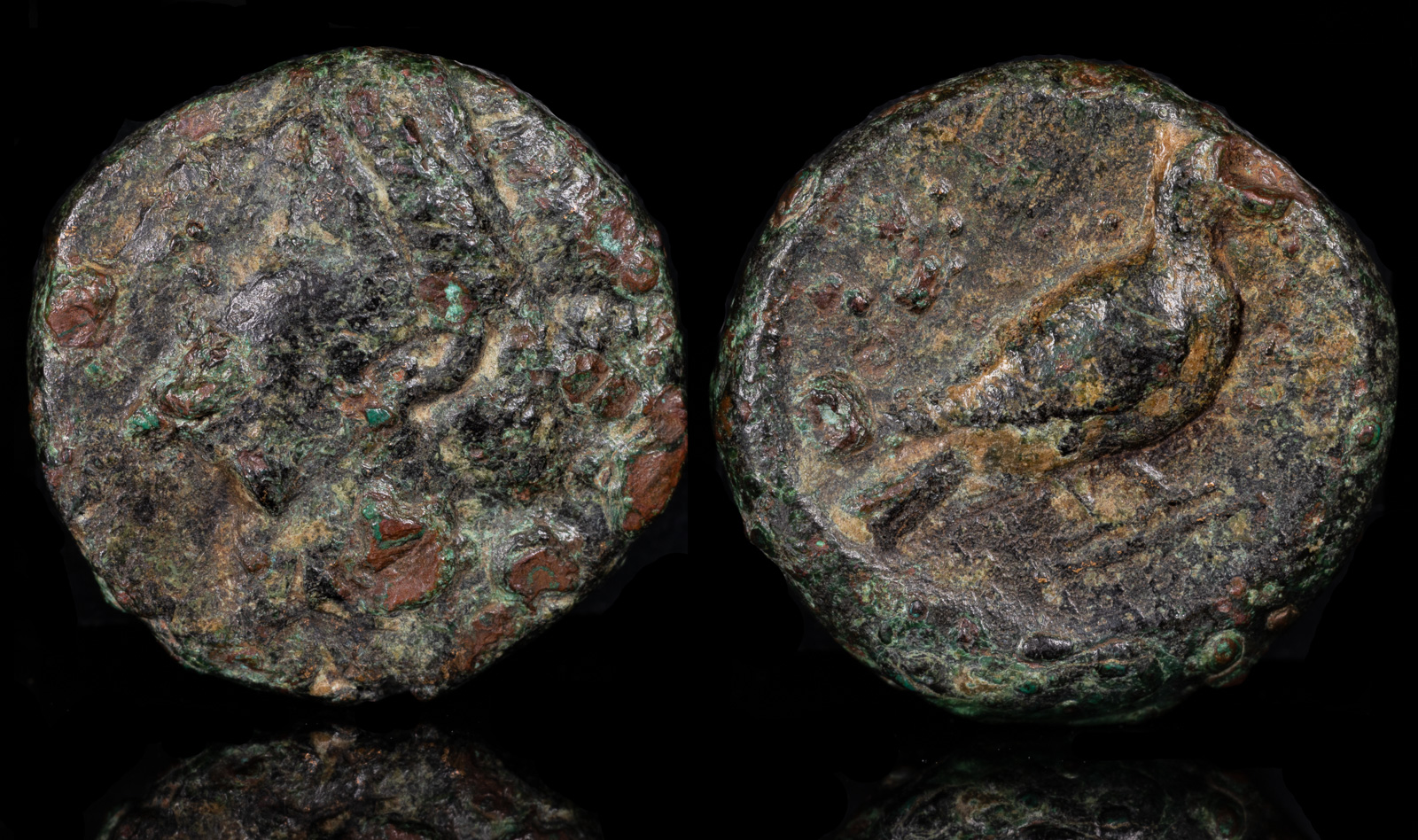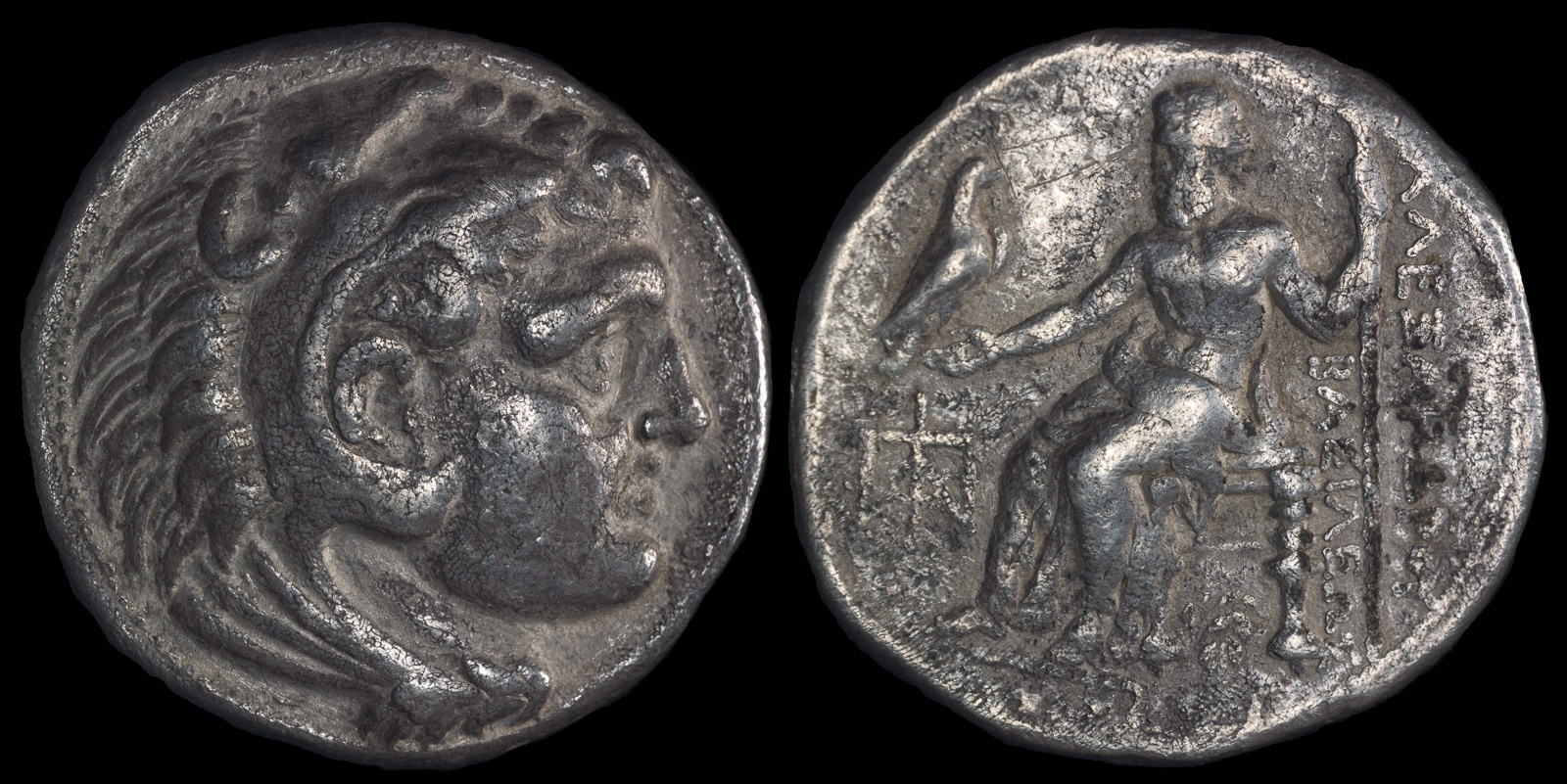
Zypern Cyprus Paphos Bronze
360-312 BCE probably Timarchos
16.00 mm 3.92 g
vgl. BMC 48
Gekr. Kopf d. Aphrodite n.l. Rs: Taube n.
Ex Sebastian Sänn
The ancient city of Paphos will forever be associated with Aphrodite, whose temple in the city was the foremost in the Greek world. Legend has it that the sculptor Pygmalion created a sculpture of Aphrodite that he found so endearing that he kept it at home to pay homage to it.
Finally, evidently feeling sorry for the poor man, Aphrodite brought the statue to life and together they had a son Paphos, for whom the city is named, and a daughter Metharme, who married another king of Cyprus named Cinyras. She would later be the mother for Adonis, who was Aphrodite’s lover but was sadly gored by a boar on a hunting trip.

CYPRUS, Paphos. Timarchos or Nikokles
Circa 350-320 BCE
Æ 16mm, 4.31 g, 1h
Head of Aprodite left, wearing decorated crown
Rose; in left field, branch, in right field, uncertain object (eagle’s head?)
Zapiti & Michaelidou 22; Destrooper pl. 10, 14; Tziambazis 92 var. (legend in reverse field)
As immortalized by Botticelli, Aphrodite first appeared in Paphos when she emerged from the sea near there. Therefore, pretty much anyone in the Greek world who wished to pay homage to her traveled to their temple in her honor.
Sometime after Alexander the Great’s death, King Nikokles moved the inhabitants of the old city to a ‘New Paphos’. When Ptolemy I destroyed Marion in 312 BCE, those people also likely moved to New Paphos. However, to make matters confusing, the ‘Old Paphos’ didn’t cease being used and still contained the most important temples.
I could find no direct reference that Paphos took part with other Cypriot cities in the Siege of Tyre, but they must have given Alexander their allegiance shortly after that, since they minted coins in his name and types.

Nikokles of Cyprus
AR silver tetradrachm
Struck at Paphos, Cyprus, 325-317 BCE
Head of Herakles right, wearing lion’s skin headdress; on lion’s mane, faint letters NIKOKΛEOYΣ at the highest points (and as such worn nearly illegible).
Reverse – BAΣIΛEΩΣ AΛEΞANΔPOY Zeus seated left; holding eagle in right hand and sceptre in left; ΠΑΦ monogram for Paphos in left field, and below the throne, a laurel spring.
Price 3123. May, Paphos 7, pl. 1, 9. Tziambazis 11. Very rare. 26mm, 17.0g
Cyprus, including Kourion and Paphos, comes under Assyrian rule.
The major cities in Cyprus – Salamis under Pnytagoras, Kourion, Paphos, and Soloi – rebel against Artaxerxes III Okhos. He sends Idreios along with the Athenian Phokion to quell the rebellion.
Demetrios Poliorketes captures Cyprus from Ptolemy I Soter and Menelaus – including Salamis, Kourion, Soloi, Paphos, and Amathos.